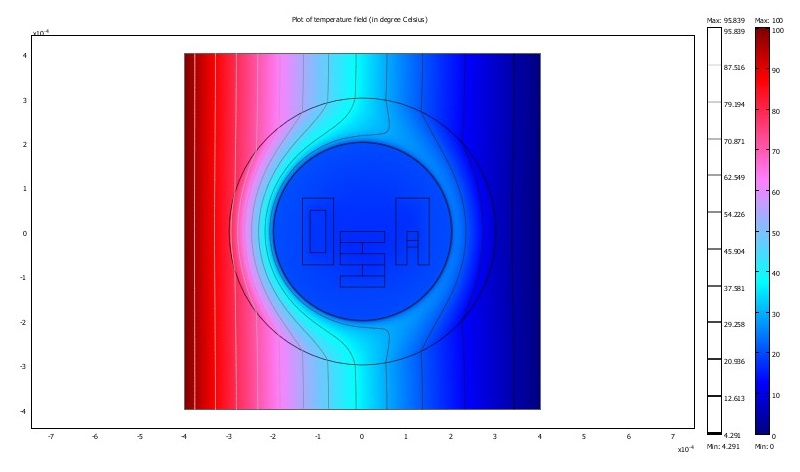
As an avid reader of the physorg.com blog, I was pleasantly surprised to see a figure show up that could only have been made with COMSOL Multiphysics. Reading the article on thermal cloaking, I understood why.

Image is courtesy of S. Guenneau, Institut Fresnel/CNRS/Aix-Marseille Université
The article is about thermal cloaking where Sebastien Guenneau of Institut Fresnel, CNRS/AMU, Marseille, uses similar methods to optical cloaking to investigate whether thermal cloaking is feasible. This is when components such as nanoelectronic and microelectronic devices would be protected from thermal diffusion, as that would be made to flow around the cloak. As reported by physorg.com and earlier by the Optical Society of America, “they applied the mathematics of transformation optics to equations for thermal diffusion and discovered that their idea could work.”
COMSOL has long been associated with cloaking devices, but most of the work has been done on optical cloaking. Apparently, it is the ease-of-use with which you can change the underlying equations to model the properties that provide this cloaking. As I wasn’t 100% sure that Guenneau’s research used COMSOL, I did a bit of searching. I soon found his paper that certainly assured me that it was — and it was an interesting article too.



Comments (0)